Scott Johnson is on a quest. Actually two. He wants to save an incredibly rare bird, and he’s looking for seven million dollars. After spending a day with him at his ground zero on the island of Andros, both of those challenges appear rather daunting.
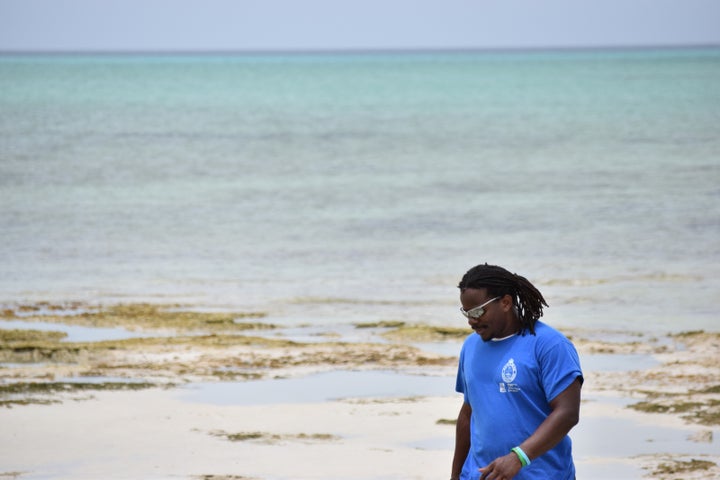
Scott Johnson, Science Officer, Bahamas National Trust
At 2,300 square miles, Andros is the largest island in the Bahamas. It’s also the least populated with only about 8,000 residents. Everything on Andros is sparse. The traffic, the neighborhoods, the restaurants. What Andros does have is bonefish, a massive coral reef, the world’s largest concentration of blue holes, flowers, crabs, elbow room, and miles of gorgeous beaches. At first glance, one would think that a native bird population would thrive but sadly, that’s not the case.
Meet the Bahama Oriole, one of the world’s critically endangered birds and native resident of Andros. There’s something less than 250 of these guys fluttering around the Kennedy-era rustic Andros and there’s but a handful of Bahamians trying to save it. And we’re here in late May hoping to spot one of the world’s rarest birds.
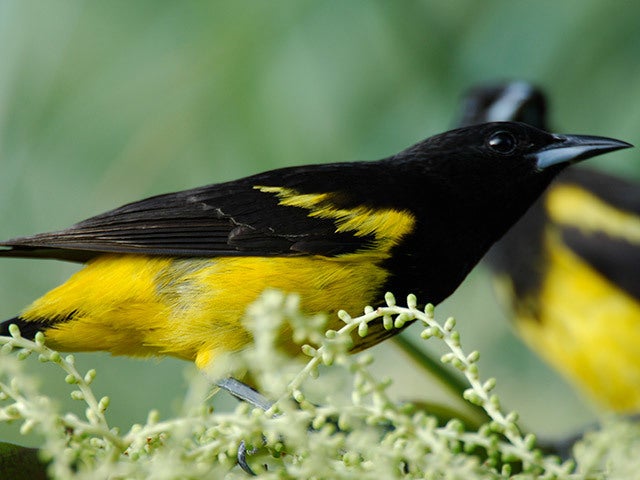
The Bahama Oriole
Scott is a Science Officer with the Bahamas National Trust. The BNT is a non-government agency that manages the 32 national parks of the Bahamas. A graduate of St. Mary’s College in Maryland, he’s part teacher, part outdoorsman, part Eagle Scout. He’s muscular and fit, with an easy smile and a Dr. Doolittle-like ability to talk to, and listen to birds. He casually glides through Andros’ rugged terrain like a Bahamian Jeremiah Johnson pointing out all manner of flora and fauna as we seek out a Bahama Oriole.
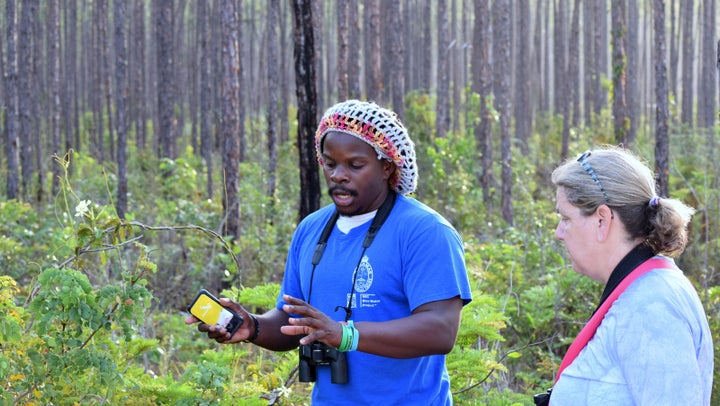
Scott with my wife, Amy utilizing his bird app.
“When I was a kid, I was always running around outside, chasing this and that and more importantly, learning. Birds, plants, fish…Oh don’t touch that. That’s poisonwood. It’s in the same family as your poison ivy.”
I take a good look at it and he’s right. It closely resembles poison ivy.
“Leaves of three?”
“Yeah man.”
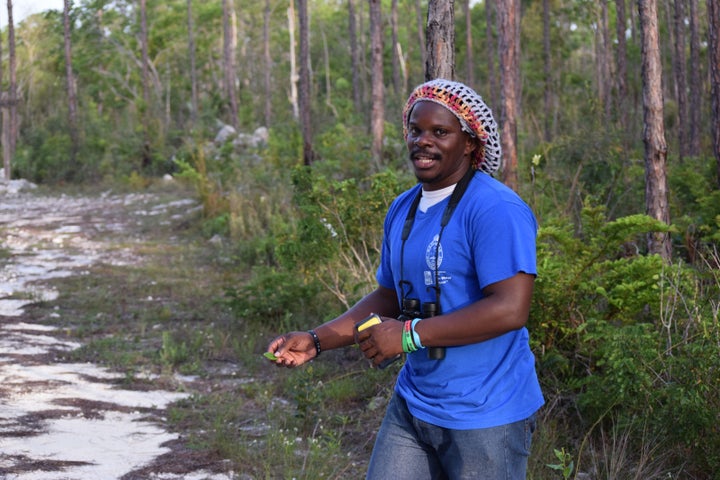
Scott Johnson on the trail of a Bahama Oriole
For most of a day, Scott drove us and hiked us across Andros while he relayed the challenge of trying to save the Bahama Oriole. Of course his biggest challenge is money.
To anyone that chooses to make their living as Scott does, doesn’t matter which country, money will always be a challenge, as will education. Educating the general public, the bird loving enthusiasts, the government, tourists, etc.
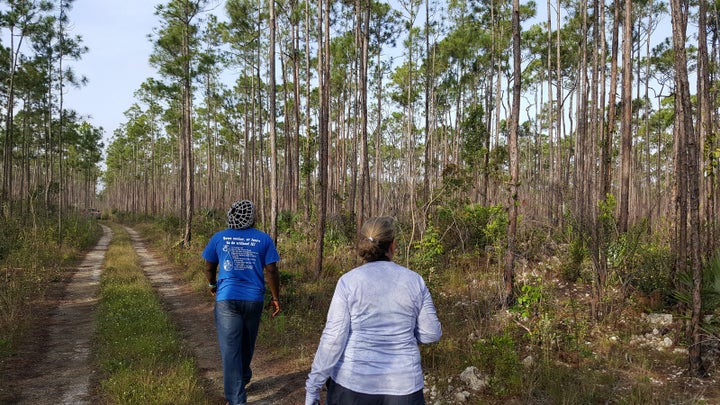
Hiking through Blue Holes National Park
He’s constantly on the go across the Bahamas, as his time is required at various islands, schools, meetings, etc. In fact, the day we spent with him he was already scheduled to speak at the local high school and we tagged along.
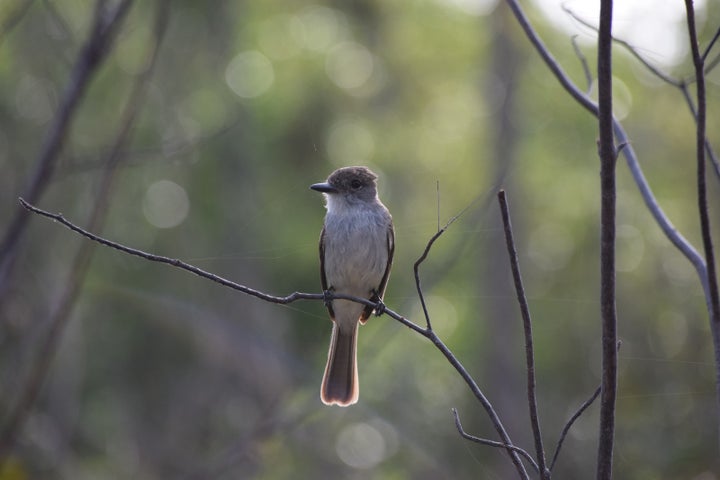
La Sagra’s Flycatcher
“Education. That’s so much of what we do. Because if you can make people realize what our natural habitats mean to so many others, how important it is to manage our resources, that’s half the battle. So I give a lot of talks, at schools all over Bahamas. And we teach birding, we have a training program that creates guides because eco-tourism is a big deal. So if we can create the experience, there’s people across the world that will and do come here just for the birds. And that boosts the economy and gets other Bahamians interested in our birds, and becoming bird guides.”

Smooth billed Ani
“It can also be frustrating, dealing with some of my fellow Bahamian’s superstitions or misinformation. Some will panic at the sight of a snake even though none of our snakes are poisonous. Our snakes eat mice and roaches and small rats yet some people would rather live with a rat in their house than a snake in their yard.”
I counter with anecdotal evidence that most people across the globe period don’t care for snakes. Which I don’t understand, and neither does Scott. Perhaps it’s biblical, perhaps it’s superstitious but I know people that would drive across an opposing lane of traffic just to run over a snake, any snake.
Scott takes us across Blue Holes National Park and with the world’s largest concentration of blue holes, of course we stopped at a few of them. Such as Jacques (Scott pronounced it jah-kweez) Cousteau’s Blue Hole, which Jacques himself first explored in 1971.
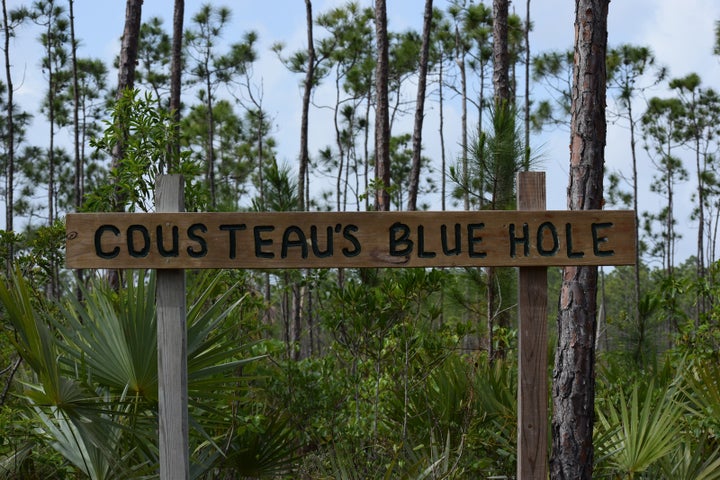
Jacques Cousteau himself explored this most famous of all Blue Holes and found it some 300+ feet deep.
And it was near this hole that Scott exclaimed “Listen! It’s an Oriole. There he goes.”
And listen we did. And even though I had my 200 mm lens, the Oriole was too fast for me. Damn. Back into the truck to search out another nest.
“The challenge is we’re always looking for money. And sadly our Oriole has to compete globally for money with other birds and mammals that are also critically endangered. Silver back gorillas, pangolins, Hawk’s Bill Turtles, all critically endangered. So we’re always on the lookout for grants but there’s so many animals on that list. It’s truly sad. The Trust has help, though. The Kevin Omland Lab at the University of Maryland, Baltimore County, is doing a population study and nest searches to learn more about the Oriole’s habits.”
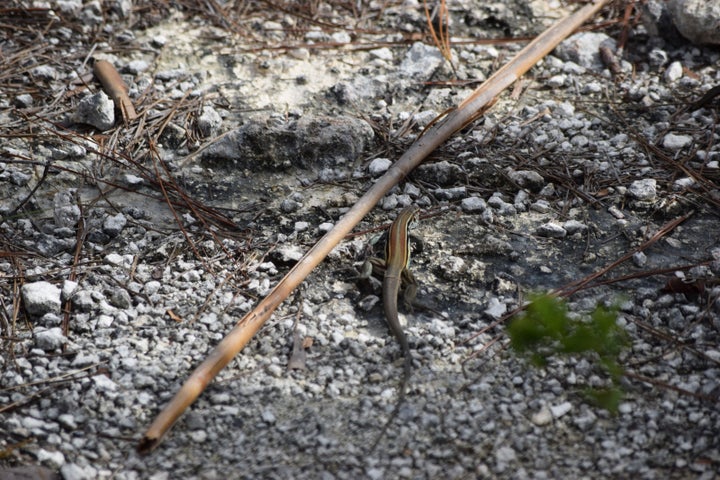
Cuban Whiptail Lizard
While driving down a narrow road to another possible Oriole nest, I’m puzzled as to why? With all this land that’s so sparsely populated, why is this bird endangered?
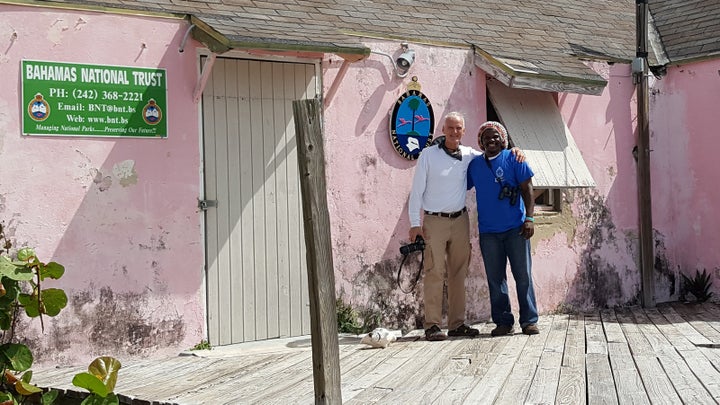
At the Bahamas National Trust office, Andros Island, Bahamas
“There’s no one answer. Their coconut palms are dying, Shiny Cowbirds tend to parasitize their nests, feral cats will kill the fledglings, diseases. Who knows what else?”
“Scott look!”
Scott hits the brakes. Ahead of us, sitting in the road is what I believe is a Chuck Will’s Widow though Scott quickly corrects me.
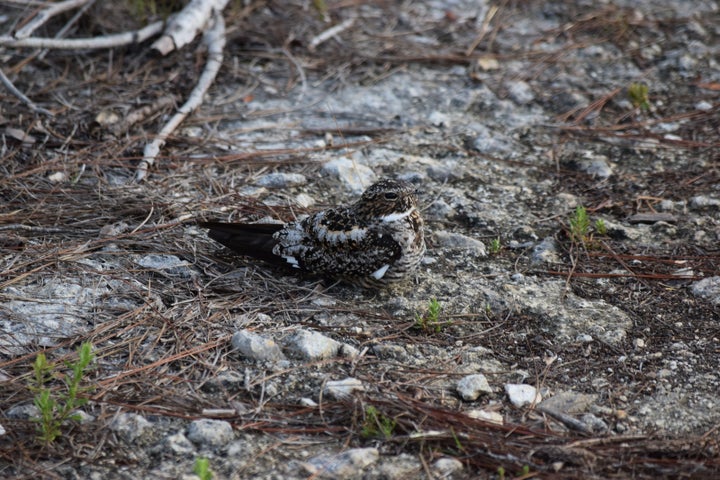
Antillean Nighthawk, a member of the nightjar family and close relative of our Nighthawks, Whip Poor Wills and Chuck Will’s Widow.
“No man. It’s an Antillean Nighthawk”
I cautiously get out and start shooting until he opens his eyes. Once he gets a good look at me, he leaps away.
“There’s so little traffic out here the nighthawk wouldn’t hesitate to sleep on the road.”
A few minutes later and we’re walking across a field in search of another Oriole nest.
As a boy, Scott spent a lot of time outside and he was fascinated by everything in nature. “Crabs, snakes, fish, birds, lizards, anything that moved or grew. My mom was the one that encouraged me and she made sure I was always learning. After high school, I got a chance to work in Michigan on the Kirtland’s Warbler Project with the Nature Conservancy and while working in a field in Michigan, I met Dr. Jordan Price, a professor at St. Mary’s. He encouraged me to apply to St. Mary’s and so I did. Oh look at this! It’s a tarantula’s hole and she’s probably in.”
While my wife backs away, Scott points out the webbing the tarantula has placed around the hole that serves as an alarm system. He picks up a pine needle and tickles the webbing hoping the tarantula would come out. And my wife is ten feet away and still backing up. At this point I decide it’s probably her or the spider.
“Hey Scott, maybe we should keep looking for that Oriole?”
After lunch we head to his office to pick up a few supplies for the school, then to the high school.
The school’s facilities are best described as austere, but no one seems to mind. The kids, the teachers, they all look happy and focused on learning. During Scott’s presentation the kids are curious, engaging and definitely entertained by his easy banter and impressive knowledge of the outdoors. Fish, birds, snakes, frogs, mammals, all their questions are answered with a grin and a knowledgeable tidbit. When one of the kids insists his grandmother has opposing information, Scott counters with a jovial request. “Man what’s your granny’s number, I gonna call her and set her straight.”
He’s obviously the right man for this job.
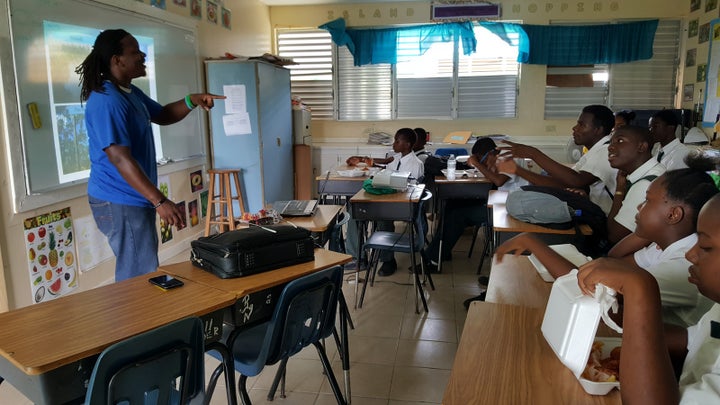
Scott Johnson at Central Andros High School
As we head out, he voices a bit of discouragement. “In order to achieve everything we need to do, to achieve the level of protection and conservation that’s required, we would need ten million dollars. Our current budget is just over three million. So the seven million we try to make up with outreach and training and enthusiasm. But the money would be great, too.”
“Scott can you save this Oriole?”
“Can I? Sure ting, John. I just need some help. From my colleagues, the people of Andros, from our friends at the Kevin Omland Lab, from anyone that loves birds or the Bahamas. Yes, I can.”
Can you help Scott save the Bahama Oriole? You can start here.
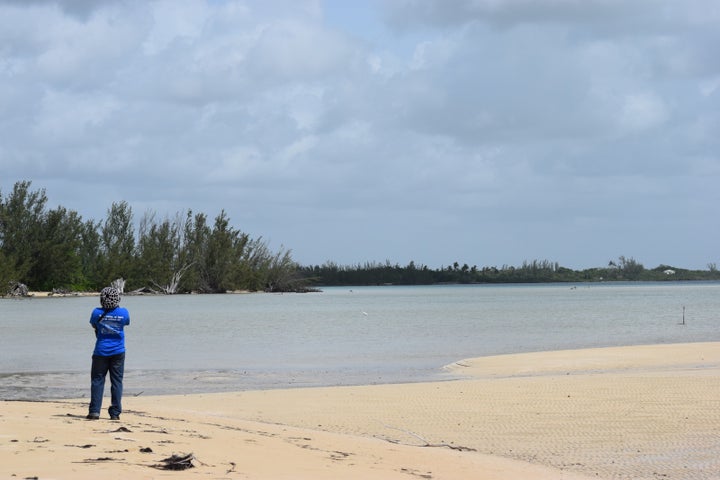
Scott Johnson
